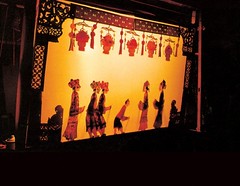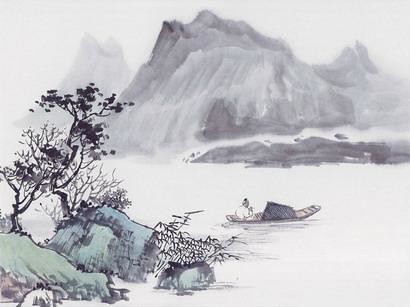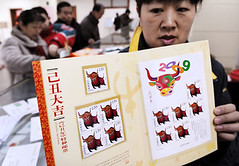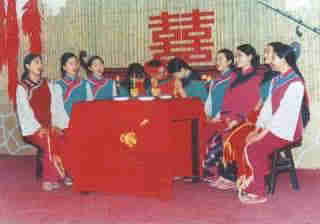| Home > Living in China > Traditional Chinese Medicine |
Basic Theory and Model of Human Body
Traditional Chinese medicine is chiefly based on the philosophical concept that the human body is a small universe with a set of complete and sophisticated interconnected systems, and that those systems usually work in balance to maintain the healthy function of the human body. The balance of yin and yang is considered with respect to qi ("breath", "life force", or "spiritual energy"), blood, jing ("kidney essence", including "semen"), other bodily fluids, the five elements, emotions, and the soul or spirit (shen). TCM has a unique model of the body, notably concerned with the meridian system. Unlike the Western anatomical model which divides the physical body into parts, the Chinese model is more concerned with function. Thus, the TCM spleen is an aspect of function related to transformation and transportation within the body, and of the mental functions of thinking and studying.
There are significant regional and philosophical differences between practitioners and schools which in turn can lead to differences in practice and theory.
Theories invoked to describe the human body in TCM include:
Channels, also known as "meridians"
Five elements
Qi
Three jiaos also known as the Triple Burner, the Triple Warmer or the Triple Energiser
Yin and Yang
Zang Fu theory
The Yin/Yang and five element theories may be applied to a variety of systems other than the human body, whereas Zang Fu theory, meridian theory and three-jiao (Triple warmer) theories are more specific.
There are also separate models that apply to specific pathological influences, such as the Four stages theory of the progression of warm diseases, the Six levels theory of the penetration of cold diseases, and the Eight principles system of disease classification.
Art
 more
moreShadow Play still Popular in Some
Shadow play, a traditional Chinese folk art with a history of more

Origin and Tools of Ink & Wash
Ink and wash painting is an East Asian type of brush painting, also

China Issued Special Stamps for
Citizens in Nanjing, East of China's Jiangsu Province, queued

Customs
 more
moreChinese Kungfu
Common Styles of Chinese Martial Arts
China has one of the longest histories of continuously recorded
Origin and Development of Wudang Martial Arts
According to the legend, Zhang Sanfeng is the originator of the
Introduction to Wudang Mountains
The Wudang Mountains, also known as Wu Tang Shan or simply Wudang,




 print
print  email
email  Favorite
Favorite  Transtlate
Transtlate 
